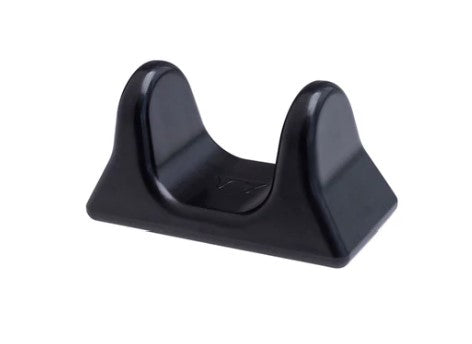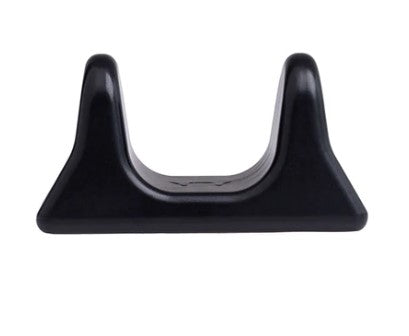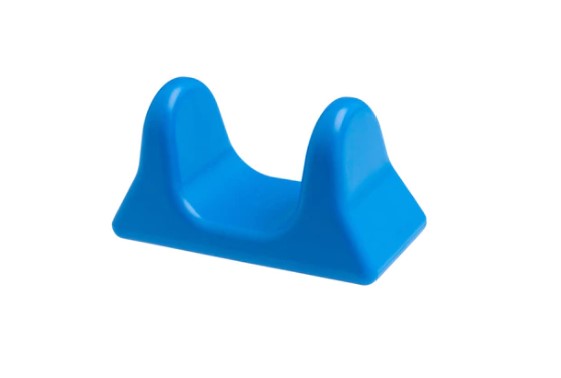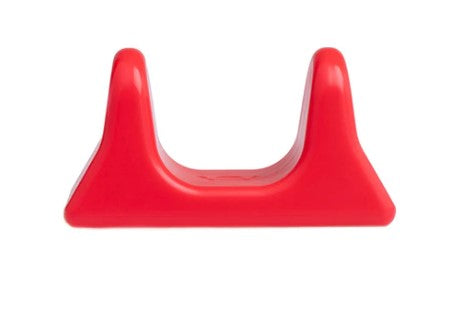
“I was telling myself warming up that it wasn’t going to go well, but I went for it. Things moved fast, but not the best. It just felt like things weren’t firing on all pistons.”Famous last words. This is from an initial consult I did recently with a lifter Dave sent over to me. “It was a good day until the bar slowed down and I lifted my head up. It felt like I only lifted the left side of my body. I felt a pop, shooting pain down my leg, and immediately dropped the bar.” Since then, he’s been in a holding pattern for roughly six months and can’t deadlift without walking funny for three days, can’t squat more than a plate without pain in his back and right hip, and had to pull out of a meet that he and his girlfriend were planning to do together.
READ: Back to the Platform After Injury: The Three Main Components of David LaMartina's Rehab
This was by far one of the more fun consultations I've done, partially because of his sense of humor but also because we got to the root of why a lot of lifters get into this holding pattern for too long that ultimately makes the idea of being “able to train” a goal that seems far away. The longer we’re away from training in whatever style we really consider "training" (whether it be conjugate, DUP, Bulgarian, or whatever method you’ve found works), the more desperate we become. Even having the ability to train come into question is enough to make almost any lifter feel anxious. I found this initial call striking for a few reasons, namely that this client made the same mistakes that a lot of lifters make at various times.

These are what I’d consider the biggest mistakes in letting injury dictate your ability to train.
1. Overly Passive Management
During our initial consult he told me, “I didn’t really do anything but rest it. I tried a bunch of ART and soft tissue work but nothing really seemed to work at all.” Every physical therapist he saw just sort of shrugged at him and basically told him good look. So he would rest, and maybe try training again, fail, and then rest more. He then did what he calls "turning into Eeyore” with regard to even being in the gym. I’ve been through periods of time that going in and squatting a plate progresses from something painful to something you constantly overthink, and day after day feels like more defeat. I’ve said in probably a dozen articles that our habits build day after day, and building a habit of passively hoping things get better without proactively choosing action is a slippery slope of pain and poor, frustrating training.2. Being Married to One Idea of Training
This can go a few ways.In the series wrap-up published about David LaMartina, we talked about having to change his training style from high-RPE, grinding sets to more intelligent fatigue accumulation. For this particular lifter, with deadlifts being a primary irritant, I asked him if he’s ever pulled conventional. Turns out, he’s stronger conventional and it doesn’t hurt. “So why did you pull sumo?” He laughed. He had a few reasons but they were based largely on coaching style and on his preference for Westside or conjugate style training. One of the first changes we made to his training was taking sumo pulling out for now, to encourage gaining some momentum getting into the gym and doing something rather than going in and continuing to leave discouraged.
3. Waiting Too Long, Psychologically and Physiologically
From a psychological standpoint, I really think that injury infringes on more than just what we can do on a day-to-day basis. Day-to-day capabilities often coincide with how we define ourselves and our concept of self. Athletes often express a fear that they’re losing a part of themselves by the time they talk to me if they wait too long. From a physiological standpoint, being able to maintain some level of conditioning and work capacity (meaning remaining relatively active) is a huge benefit when coming back from injury.4. Ignoring the Body's Signals
Ben Pollack recently wrote in one of his newsletters about how elite lifters know their bodies after over a decade of training; he knows his on/off switch, and when it’s okay to push the envelope through a few more reps versus training into tissue injury. I’ve had phenomenal lifters comment to David that he seems to have a very high intelligence and awareness for subtleties, proprioceptively, that vary day to day in training and indicate the difference between a good and a bad day to push things. This lifter that I was working with was probably somewhere in that spectrum of knowing on versus off; he acknowledged that even though the bar was moving fast, he could tell things weren’t firing on all cylinders. But because his coach's peaking program had very little room for modification, he pushed through anyway. Coaches are helpful. Programs are helpful and give guidance. But ultimately you live inside your body, and every part of your training, competing, and most other parts of your life are purely your choice. I can’t think of a single coach I’ve spoken to that would tell an athlete to push through signs of “not today.” If that is your coach, you need to find a new one or go on your own. These are simple things that are often overlooked and that many lifters let go in one ear and out the other. But they’re also the biggest and easiest things you can do to avoid the type of big injury that keeps you out for longer than you need to be. I’d estimate over two thirds of the lifters I talk to have at least three of these four traits in common with regard to how their injury cycle started to begin with. Give yourself an option for a path of lesser resistance than climbing up from a deep hole.








































































